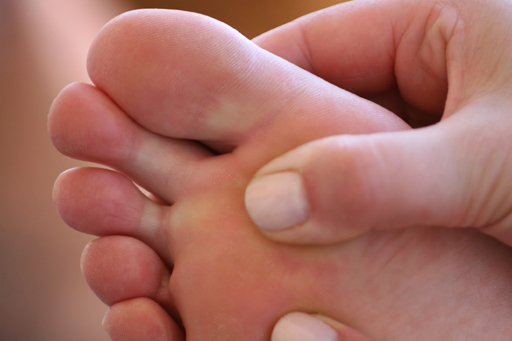In Practice
Follow this topic
Bookmark
Record learning outcomes
Scenario
Pharmacy technician Vicky asks customer Jack Bradshaw if he is over his attack of gout, which his wife mentioned when she popped in to collect a prescription for him the previous week. "Thanks for asking, Vicky, it's much better now," he replies. I've never known pain like it, you know. I couldn't even have a sheet over my foot when I was in bed at night!
"The doctor is looking at some of my medication to see if anything needs adjusting so it doesn't happen again, but is there anything else I could do? Someone mentioned I should cut back on the beer."
Answer
Foods that are high in purines, a type of protein, can increase the risk of a gout attack, so dietary changes can play a significant part in management of the condition. High-purine foods, which should be avoided, include offal, game, oily fish, shellfish, meat and yeast extract products.
Foods that have a lower but still significant purine content and therefore should be eaten in moderation include poultry, dried peas, beans and legumes, mushrooms and mycoprotein foodstuffs (e.g. Quorn), whole grains and some vegetables, notably asparagus, cauliflower and spinach. Some people find that certain foods trigger gout, despite having a low purine count, so these should also be avoided.
Alcohol can raise uric acid levels and trigger gout attacks, so a reduction in consumption is sensible. Vitamin C has been shown to reduce the risk of gout, so increasing dietary sources or taking a supplement may be beneficial, though Jack should check with the pharmacist or GP that this course of action won’t cause any problems with his current medication. There is also evidence supporting the use of sour cherries and their juice as a natural gout remedy, as well as drinking plenty of non-alcoholic fluids.
The bigger picture
It is good that Jack's GP is reviewing his medical history in light of his recent gout attack, as certain conditions and drugs can increase the risk of the condition. These include drugs for hypertension, kidney disease, diabetes, hyperlipidaemia and osteoarthritis of the feet, hands or knees, antihypertensives, aspirin and diuretics. If Jack is overweight, weight reduction will be beneficial too.
Gout is a type of arthritis in which uric acid accumulates in the body. Uric acid levels may be high because the body is producing too much, or not enough is being expelled via the urine, although not everyone with high uric acid levels will develop gout. In those who do, crystals will eventually build up around joints, most commonly the big toe, causing swelling, inflammation and pain, usually for between one and 10 days.
This is known as a gout attack. During an attack, non-steroidal antiinflammatory drugs (NSAIDs) are usually prescribed, sometimes alongside a proton pump inhibitor. They should be taken at the first symptoms, throughout the attack and for 48 hours afterwards.
Colchicine is an alternative to NSAIDs for those who cannot take them, with corticosteroids reserved for severe cases and those who are intolerant of both NSAIDs and colchicine. Rest, raising the limb, and keeping the affected joint cool using ice packs can also help. Medication has a role in prevention for those who suffer frequent attacks of gout, have evidence of resultant joint damage, impaired kidney function or a history of kidney stones.
The aim is to reduce uric acid levels to prevent crystal formation. Allopurinol is the most commonly used drug, with febuxostat reserved for those who cannot take it – for example, patients with kidney disease. Both can initially cause symptoms to worsen.
Extend your learning
- NSAIDs are the usual treatment for gout attacks because they relieve pain and inflammation. However, aspirin is not recommended. Find out why by reading the information under "NSAIDs" here
- Colchicine is sometimes used to treat an attack of gout. Learn more about the very specific dosing that applies to this drug and the most commonly experienced side effects here.
- Why do you think a proton pump inhibitor may be prescribed alongside an NSAID? Should this always be done? Find out more by reading the section "NSAID associated ulcers" in chapter 1.43 of the British National Formulary, which is available to subscribers.

